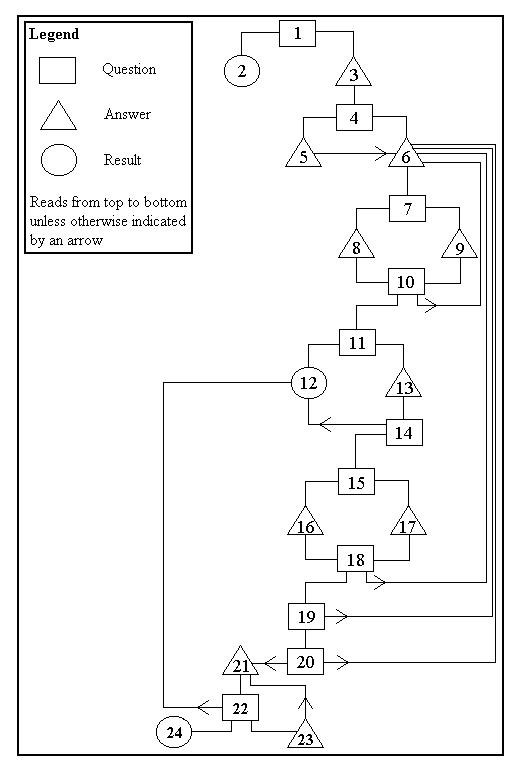

| 1 | Does the program benefit individuals or corporations? | |
| CORPORATIONS | 2 | Put a businessman in charge and ignore the program. |
| INDIVIDUALS | 3 | Put somebody who has a financial stake in eliminating the program or who knows nothing about what it is intended to accomplish in charge and restructure it so that the power to make decisions about the program is concentrated in the office of the Premier. |
| 4 | Is there an outcry against the changes? | |
| YES | 5 | Ignore it. |
| NO | 6 | Cut funding to the program to pay for tax cuts. |
| 7 | Is the federal government offering funds to help prop up the now underfunded program? | |
| NO | 8 | Complain that the federal government is threatening the health of the program by refusing to give it adequate funding. |
| YES | 9 | Thank the federal government for the money and put it into your general revenue so you can afford further tax cuts. |
| 10 | Is the program in crisis yet? | |
| NO | 6 | Cut funding to the program to pay for tax cuts. |
| YES | 11 | Is the program considered a "sacred trust" (such as education, medical care and pensions)? |
| NO | 12 | Privatize the sucker. |
| YES | 13 | Argue that privatization of parts of the system will make it more efficient, solving its current economic problems. |
| 14 | Is there a public outcry against privatizing the system? | |
| NO | 12 | Privatize the sucker. |
| YES | 15 | Are the Party's backers pushing for more tax cuts? |
| NO | 16 | Say that there is no crisis and critics of your policy don't know how much better the affected social institutions are because of the changes you've made. |
| YES | 17 | Cut funding to the program and to hell with the public's opinion. |
| 18 | Are the cutbacks to the program having adverse social effects (such as people dying after drinking tainted water or freezing to death on the streets where they landed because they could no longer pay their rent)? | |
| NO | 6 | Cut funding to the program to pay for tax cuts. |
| YES | 19 | Is there public outrage over the adverse consequences? |
| NO | 6 | Cut funding to the program to pay for tax cuts. |
| YES | 20 | Is this an election year? |
| NO | 6 | Cut funding to the program to pay for tax cuts. |
| YES | 21 | Put money back into the program and claim that you have now improved it, even though it now has less funding and public oversight than it did before your Party took office. |
| 22 | What is the outcome of the election? | |
| MAJORITY | 12 | Privatize the sucker. |
| MINORITY | 23 | Try to build a coalition with another party or parties, but use every opportunity to slam them for slowing economic growth by opposing your policies, guaranteeing an early election. |
| YOU LOSE | 24 | From the opposition benches, insist cutting back on social programs to pay for tax cuts is the only way to prosperity. |
Notes
Remember when "crisis management" meant working towards solving a crisis rather than working towards creating one? Neither do we. Back to back majority Conservative governments in the province will do that to you.
The Provincial Conservative Party Social Policy Algorithm takes you step by step though the thinking that goes into Tory social policy. Simply answer the questions and work your way down the algorithm until you come to a conclusion. Although it is highly educational, the algorithm is not recommended for children or adults with weak hearts or who are allergic to peanuts.
The Provincial Conservative Party Social Policy Algorithm is descriptive, rather than prescriptive. In putting it together, we have tried not to explore social policies which should exist, but simply describe the approach to policy which appears to actually exist. If you have a problem with it, mail your MPP - they love letters.



